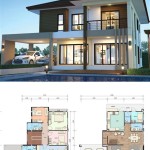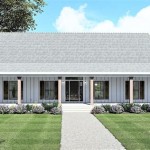Falling Water House Plans and Section: An Architectural Masterpiece
The iconic Falling Water House, designed by renowned architect Frank Lloyd Wright, is a testament to organic architecture and a masterpiece of modernism. Its unique design and seamless integration with its natural surroundings have made it an architectural marvel and a global destination. ### Plan and Layout The Falling Water House consists of three horizontal cantilevered trays, each supported by a central stone pier. The house extends over a waterfall, creating a striking visual effect that gives the structure its name. The main living area, located on the middle tray, features an open floor plan with expansive windows that offer breathtaking views of the natural surroundings. ### Section Analysis The sectional view of Falling Water House reveals its complex architectural composition. The foundation consists of a series of concrete piers that support the massive stone columns upon which the cantilevered trays rest. The living area, located on the second tray, is characterized by its high ceilings and clerestory windows that provide natural light and ventilation. The lower tray contains the service areas, including the kitchen, utility room, and garage. The upper tray, accessible via a spiral staircase, serves as a private retreat with bedrooms and a study. ### Materials and Construction Wright used local materials to construct the Falling Water House, including stone from the nearby creek bed and native hemlock wood. The stone walls and columns provide structural support and blend seamlessly with the natural environment. The cantilevered trays were built using reinforced concrete, a relatively new material at the time. The roof of the house is made of copper, which has aged beautifully over time and complements the warm tones of the stone and wood. ### Integration with Nature One of the most striking features of Falling Water House is its integration with the natural surroundings. The house appears to hover over the waterfall, creating a dramatic interplay between architecture and nature. The extensive use of glass windows and balconies allows the occupants to experience the beauty of the forest and the sound of the rushing water. ### Architectural Significance The Falling Water House is considered one of the most important works of 20th-century architecture. It exemplifies Wright's philosophy of organic architecture, which emphasizes the harmonious relationship between buildings and their natural surroundings. The house has been designated a National Historic Landmark and is widely admired for its innovative design and architectural beauty. ### Conclusion The Falling Water House stands as a testament to the brilliance of Frank Lloyd Wright and the enduring power of organic architecture. Its innovative design, seamless integration with nature, and meticulous attention to detail make it a masterpiece of modernism and a celebrated architectural icon. The plans and section analysis provide a glimpse into the complexity and beauty of this extraordinary structure.
Fallingwater Drawings And Plans Falling Water House Waterfall

Fallingwater Designing Buildings

Frank Lloyd Wright S Fallingwater The Edgar J Kaufmann House

Falling Water Frank Lloyd Wright Modern Architecture A Visual Lexicon

1 Basement First Floor Plans Fallingwater Guest House State Route 381 Stewart Township Ohiopyle Fayette County Pa Library Of Congress

The Falling Water Floor Plan Howard Architectural Models

Gallery Of Ad Classics Fallingwater House Frank Lloyd Wright 12

Falling Water Plans Google Search Wasserhaus Hauspläne Design Für Zuhause

Fallingwater House Iar Raul Esteve

Gallery Of Ad Classics Fallingwater House Frank Lloyd Wright 13








